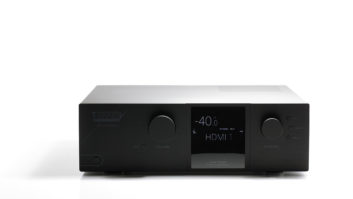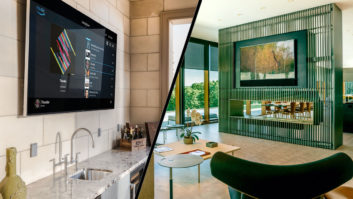Last month, the New York Times featured an article from a writer who wanted to make her onebedroom Manhattan apartment “smarter” by buying $2,500 worth of consumer electronics products. The purely theoretical endeavor revealed a lot about our industry and the perception that the CEDIA channel does not serve the “average consumer.”

The article, titled “How Smart Could I Make My Dumb Manhattan Apartment?” included interviews with two knowledgeable New York-area CEDIA members, and one young kid working the sales floor at the local Best Buy, who hadn’t heard of the “Custom Electronic Design and Installation Association.”
It’s impossible to know if the CEDIA guys were misrepresented or not, but the implication was that they could not hit the client’s budget or “solution requirement.” Maybe the writer egged them for sake of good prose, but the result was that the kid from Best Buy ended up getting the theoretical job.
Via my Residential Systems LinkedIn group, Firefly Design Group owner Ron Callis responded to my link to the article by saying ESCs have to do a better job of learning about the client’s project goals and budget requirements.
“Some ESCs have a business model that can support a higher volume of lower margin projects, [while] others have not yet needed to adjust or have resisted the obvious need to change,” Callis stated. “Most ESCs live in the world of their solutions and black boxes. Those that make the process of meeting the client’s ‘wants and needs’ fun and informative, are probably growing their business right now.”
Another LinkedIn group member, Jamie Sasser of AV NetResults, responded to the article by noting that the days of conspicuous consumption are over for most people and that the CEDIA channel should learn to address the client’s more practical concerns.
“We have to focus on providing value for our clients, whether that is at the six-figure level or four figures,” Sasser noted. “People want value, not a bunch of neat party tricks. The good thing is that most CEDIA guys know that, and have adjusted, or are adjusting, accordingly.”
Industry consultant Chris Wildfoerster was not surprised by the (mostly accurate) depiction of CEDIA as being somewhat out of touch with the mass market. “CEDIA wasn’t created as a mass-market association,” he stated. “[But,] the paradigm shift taking place now is forcing CEDIA and its dealers to be more receptive to lower cost/lower margin/increased number of installations/services business models [that] some of their members weren’t accustomed to.”
I do believe that the leadership of CEDIA and even many of its channel-specific manufacturers are looking toward a future focused on serving much more than just the mega-wealthy. CEO Utz Baldwin has spoken about the potential for serving an older baby boomer client base with “aging in place” solutions as well enhanced technologies for enjoying the same entertainment to which they have become accustomed. He also has pointed to the next generational wave, which includes the most technically connected population of all time.
The key for our industry, argued Residential Systems columnist Richard Millson last month at the CEDIA Management Conference, is to become faster, smarter, and more efficient. A properly run “powerhouse” business, like the one Millson describes on page 50, will provide the highest value possible for clients who may no longer be interested in the services that it used to provide. It may also be better able to hit the $2,500 budget set by a New York City newspaper reporter.







